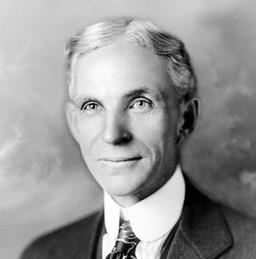
Kazuki Nakayashiki
Kazuki Nakayashiki is a co-founder of Glasp, a social web clipper that allows users to share their highlights and notes as they read, without any back-and-forth between the web and a note-taking app. He has a background in entrepreneurship, as his grandfather founded a construction company and his father founded an electronics company in Japan.
296 Quotes
"Identify what truly excites and interests you. What subjects or ideas do you find yourself constantly drawn to? These are the areas where you should focus your efforts."
— Kazuki Nakayashiki
Achieving Great Work: Combining Curiosity, Effort,..."Be open to exploring connections between different fields. Look for opportunities to merge your passions and interests to create something unique."
— Kazuki Nakayashiki
Achieving Great Work: Combining Curiosity, Effort,..."Embrace outlier ideas and pursue them, even if they are not initially popular. Trust your expertise and intuition, and don't be afraid to challenge conventional wisdom."
— Kazuki Nakayashiki
Achieving Great Work: Combining Curiosity, Effort,..."""You and Your Research"" emphasizes the value of patience and persistence, highlighting that great work often requires a depth-first search approach. This means staying committed to a problem or idea, even when faced with setbacks or challenges."
— Kazuki Nakayashiki
Achieving Great Work: Combining Curiosity, Effort,..."The combination of curiosity, delight, and the desire to do something impressive can drive individuals to work harder and achieve greatness."
— Kazuki Nakayashiki
Achieving Great Work: Combining Curiosity, Effort,..."Embrace setbacks and view them as opportunities for growth. Learn from your mistakes and adapt your approach to overcome obstacles."
— Kazuki Nakayashiki
Achieving Great Work: Combining Curiosity, Effort,..."exposing questions others can answer or creating ideas that others can build upon are signs of great work"
— Kazuki Nakayashiki
Achieving Great Work: Combining Curiosity, Effort,..."Foster a habit of original thinking by actively seeking out new ideas and perspectives. Engage in conversations, write about your interests, and ask thought-provoking questions."
— Kazuki Nakayashiki
Achieving Great Work: Combining Curiosity, Effort,..."Seek collaboration with like-minded individuals who challenge and inspire you. Surround yourself with colleagues who offer surprising insights and bring diverse perspectives to the table"
— Kazuki Nakayashiki
Achieving Great Work: Combining Curiosity, Effort,..."Remember, great work is not just about the end result, but also about the struggle and growth that comes with it. Stay committed, stay curious, and never stop pushing the boundaries of what is possible."
— Kazuki Nakayashiki
Achieving Great Work: Combining Curiosity, Effort,..."In a world where knowledge is power, the act of sharing knowledge takes on a profound significance. By sharing our wisdom and insights, we not only empower others but also ignite a transformative process within them. This act of sharing is not merely about giving information; it is about guiding others to discover their own potential and capabilities."
— Kazuki Nakayashiki
Knowledge Is Power – And Why You Should Share It"the true power of knowledge lies not in its possession, but in its dissemination. By sharing knowledge selflessly, we offer others an opportunity to gain insights, learn from our experiences, and expand their horizons."
— Kazuki Nakayashiki
Knowledge Is Power – And Why You Should Share It"By sharing our knowledge, we encourage others to do the same, creating a cycle of learning and enlightenment. The act of sharing becomes a reciprocal process, where both the giver and the receiver benefit."
— Kazuki Nakayashiki
Knowledge Is Power – And Why You Should Share It"""The beautiful thing about learning is that no one can take it away from you."" - B.B. King"
— Kazuki Nakayashiki
Knowledge Is Power – And Why You Should Share It"When we pass on our knowledge to others, we leave a lasting legacy that transcends physical existence. The knowledge we impart becomes a part of the collective consciousness, shaping future generations and influencing the course of history. In this way, sharing knowledge becomes a means of achieving a form of immortality—an eternal presence in the minds and hearts of those who benefit from our wisdom."
— Kazuki Nakayashiki
Knowledge Is Power – And Why You Should Share It"There is only one way to learn, and this way is through other people."
— Kazuki Nakayashiki
Why Social Learning Matters"Social learning is what has helped humans develop through generations. It’s what helped pass down ideas of the greatest thinkers in history, be them philosophers, scientists, or mathematicians. It’s the reason why you’re able to read this sentence at this very moment."
— Kazuki Nakayashiki
Why Social Learning Matters"The ability to share information and learn something together is a strong human nature that makes us different from other animals. That makes social learning humanity’s main advantage over other species, including primates."
— Kazuki Nakayashiki
Why Social Learning Matters"People teach people, regardless of the setting or the means."
— Kazuki Nakayashiki
Why Social Learning Matters"The Ratchet Effect happens when cultural information is learned, and then modified/improved according to a person’s own values. The reason it’s called The Ratchet Effect is because cultural information can’t be unlearned — it can only be changed and improved upon."
— Kazuki Nakayashiki
Why Social Learning Matters"“(…) you understand an idea not when you’ve memorized it, but when you know why its specific form was chosen over all the alternatives. Only once you’ve traveled the roads that were earnestly explored but ultimately rejected can you grasp an idea firmly and see it clearly, with all the context that supports it.”"
— Kazuki Nakayashiki
Why Social Learning Matters"Knowing is one thing. Exploring is another. And both are crucial for learning and understanding."
— Kazuki Nakayashiki
Why Social Learning Matters"Unless they’ve mastered both theory and practice — the practice being the true social learning aspect of knowledge — they haven’t fully learned anything."
— Kazuki Nakayashiki
Why Social Learning Matters"Albert Bandura’s Social Learning Theory says exactly that: humans’ learning and behavior is based on “observing, modelling, and imitating the behaviors, attitudes, and emotional reactions of others.”"
— Kazuki Nakayashiki
Why Social Learning Matters"social learning goes to show that people learn better and attain more information by teaching others."
— Kazuki Nakayashiki
Why Social Learning Matters"It’s pretty interesting how deep discussions can go when you’re willing to learn and share your point of view."
— Kazuki Nakayashiki
Why Social Learning Matters"since the number of perspectives directly connects with one’s understanding and depth, we should all consider learning socially."
— Kazuki Nakayashiki
Why Social Learning Matters"Never underestimate people’s intelligence. You can always learn something new by reading, observing, and listening — no matter whose words you’re reading, who you’re observing, or who you’re listening to."
— Kazuki Nakayashiki
Why Social Learning Matters"Give people a chance to teach you things. You’d be surprised with how much you can learn from a simple passage or conversation."
— Kazuki Nakayashiki
Why Social Learning Matters"The takeaway: allow yourself to learn from people, whoever they might be. Pay attention. Observe. Discuss. Doubt. Look for a deeper meaning. Read between the lines. We’re social beings who can only go forward from here."
— Kazuki Nakayashiki
Why Social Learning Matters"Curiosity is a natural desire that drives us to know or learn something. It is a sustained desire that we have inherently."
— Kazuki Nakayashiki
The Future of Search"people have the nature of loss aversion. We don’t want to waste the time we have spent. That may be why people curate."
— Kazuki Nakayashiki
The Future of Search"Curate what you have searched for, and search in the future from the curated bucket."
— Kazuki Nakayashiki
The Future of Search"(1) generic search from the Internet, (2) curate important parts and (3) search from the curated bucket."
— Kazuki Nakayashiki
The Future of Search"the quality and scope of the bucket are two important aspects."
— Kazuki Nakayashiki
The Future of Search"The quality could be maintained by using social accountability associated with public aspects."
— Kazuki Nakayashiki
The Future of Search"the way people organize information is often different from the way they actually search for it"
— Kazuki Nakayashiki
The Future of Search"public highlight could take the good parts of both: social accountability and specific important parts. This may ensure the quality of the curated bucket."
— Kazuki Nakayashiki
The Future of Search"when we search for something, it may be more effective to separate the scope into vertical or narrow it down because the scope is directly related to the signal-noise ratio."
— Kazuki Nakayashiki
The Future of Search"the word curate and curious are derived from the same Latin word, cura (care)"
— Kazuki Nakayashiki
The Future of Search"in the case of In-cura-net, you can use an interest graph & social graph to search for information."
— Kazuki Nakayashiki
The Future of Search"The future of search may be vertical through high-quality curated buckets, in-cura-net, that makes the most use of interest graph and social graph."
— Kazuki Nakayashiki
The Future of Search"a public exchange of knowledge is the backbone of the Curator Economy, and it can make a difference to anyone who’s looking to enrich their already existing education."
— Kazuki Nakayashiki
Learning in Public: The Most Effective Way to Learn"you should be part of a community that wants the same thing as you: to seek knowledge."
— Kazuki Nakayashiki
Learning in Public: The Most Effective Way to Learn"Conversations with like-minded people may bring us ideas we wouldn’t be able to construct on our own. Not because we’re not smart, but because we need others to learn. And the more people, the better."
— Kazuki Nakayashiki
Learning in Public: The Most Effective Way to Learn"Bill Gates himself once said: “We all need people who will give us feedback. That’s how we improve.”"
— Kazuki Nakayashiki
Learning in Public: The Most Effective Way to Learn"If you’re a true learner, you’ll listen to the feedback of people who matter to your progress. Not only will you listen to it, but you’ll implement the feedback you judge is important for your growth."
— Kazuki Nakayashiki
Learning in Public: The Most Effective Way to Learn"There’s this feeling of being supported, the feeling of being part of something great, which gives us purpose to keep doing what we’re doing."
— Kazuki Nakayashiki
Learning in Public: The Most Effective Way to Learn"Learning in public is all about connecting with people whose insights are valuable to us."
— Kazuki Nakayashiki
Learning in Public: The Most Effective Way to Learn"even though you’ve amassed a great deal of knowledge on a topic, that doesn’t mean a person who knows less than you can’t teach you something."
— Kazuki Nakayashiki
Learning in Public: The Most Effective Way to Learn"the best way to learn something is by teaching others."
— Kazuki Nakayashiki
Learning in Public: The Most Effective Way to Learn"“What we know is a drop, what we don’t know is an ocean.” Sir Isaac Newton"
— Kazuki Nakayashiki
Learning in Public: The Most Effective Way to Learn"the act of leaving their legacy is part of the genius of the greatest minds in history. That means they’ve made their mistakes, their wins, their progress, and their roadblocks available for posterity to learn from them. If future generations take their time to learn, they could navigate life a lot more easily."
— Kazuki Nakayashiki
Learning in Public: The Most Effective Way to Learn"The curator economy is the democratization of human content curation. It’s curation done in its most visceral way: by human minds, and by human hands. Above all, human content curation involves smart, insightful contextualization of the content being shared. That can be achieved through highlights, notes, and comments."
— Kazuki Nakayashiki
Towards the Curator Economy"content curation is the simplest and fastest route to finding quality content on specific topics. It’s about arriving at the right destination with the least amount of stoppages along the way."
— Kazuki Nakayashiki
Towards the Curator Economy"The surest way to avoid going down the internet rabbit hole and surface with barely anything — or even worse, surface with deceitful information — is to follow those who know where they’re going."
— Kazuki Nakayashiki
Towards the Curator Economy"When there’s too much to take in, people either get overwhelmed or lose interest."
— Kazuki Nakayashiki
Towards the Curator Economy"Content curation will help you find the information you need faster, based on experience and reliable sources."
— Kazuki Nakayashiki
Towards the Curator Economy"When you’re guided by like-minded people, you flatten the learning curve. You waste less time. You find what you need more easily by working with data that serves your purpose."
— Kazuki Nakayashiki
Towards the Curator Economy"Social media apps like TikTok and Twitter rely on Interest Graphs in order to laser-focus their recommendations of brand new content to an audience."
— Kazuki Nakayashiki
Letting the Interest Graph Guide You"the app’s machine learning algorithm will “grasp” their preferences."
— Kazuki Nakayashiki
Letting the Interest Graph Guide You"the success behind TikTok is the fact that people care about things that they’re interested in, not people themselves much."
— Kazuki Nakayashiki
Letting the Interest Graph Guide You"What we enjoy is finding people who are like ourselves in some aspects, so we’ll feel like we belong on Twitter (or anywhere else, for that matter)."
— Kazuki Nakayashiki
Letting the Interest Graph Guide You"You’ll most likely follow someone because you’ve resonated with something they posted. Robert B. Cialdini, P.h.D, states very clearly that one of the most influential factors when it comes to resonating with someone is similarity."
— Kazuki Nakayashiki
Letting the Interest Graph Guide You"“We like people who are similar to us. This fact seems to hold true whether the similarity is in the area of opinions, personality traits, background, or lifestyle.”"
— Kazuki Nakayashiki
Letting the Interest Graph Guide You"How does Twitter fix that? By giving users the ability to mute certain words and topics, as well as the ability to ignore certain topics recommended on their timeline. Little by little, users’ feeds are adapted specifically to their interests."
— Kazuki Nakayashiki
Letting the Interest Graph Guide You"According to Twitter for Business, “People come to Twitter to connect with the passions and pursuits that they find meaningful”."
— Kazuki Nakayashiki
Letting the Interest Graph Guide You"A Social Graph can only offer a superficial view of a person’s interests."
— Kazuki Nakayashiki
Letting the Interest Graph Guide You"Interest Graphs are deeper and more reliable since they track the patterns of human behavior through machine learning."
— Kazuki Nakayashiki
Letting the Interest Graph Guide You"Matched interests generate connections. Connections generate affinity. Affinity increases preference, which, in turn, increases trust. That’s what makes an Interest Graph a mutually beneficial tool."
— Kazuki Nakayashiki
Letting the Interest Graph Guide You"Product/market fit means being in a good market with a product that can satisfy that market."
— Kazuki Nakayashiki
Product Market Fit Guideline | Glasp"Finding product market fit = focusing on the market first. [...] The problem, i.e. the market, is the real opportunity."
— Kazuki Nakayashiki
Product Market Fit Guideline | Glasp"What keyword do people search to get to your site? Put those keywords into Google Keyword Tool How many people are searching for this keyword?"
— Kazuki Nakayashiki
Product Market Fit Guideline | Glasp"Myth 1: Product market fit is always a discrete, big bang event. Myth 2: It’s patently obvious when you have product/market fit. Myth 3: Once you achieve product/market fit, you can’t lose it. Myth 4: Once you have product/market fit, you don’t have to sweat the competition."
— Kazuki Nakayashiki
Product Market Fit Guideline | Glasp"hiring before you get product/market fit slows you down, and hiring after you get product/market fit speeds you up."
— Kazuki Nakayashiki
Product Market Fit Guideline | Glasp"the cohort retention rate is a fair product/market fit metric."
— Kazuki Nakayashiki
Product Market Fit Guideline | Glasp"Flattened Retention Curve (= PMF for some market or audience)"
— Kazuki Nakayashiki
Product Market Fit Guideline | Glasp"product/market fit is when 40% of your users answered that they would be “very disappointed” without your product (aka Sean Ellis’s leading indicator)."
— Kazuki Nakayashiki
Product Market Fit Guideline | Glasp"In essence, it's better to make something that a small number of people want a large amount, rather than a product that a large number of people want a small amount."
— Kazuki Nakayashiki
Product Market Fit Guideline | Glasp"A good rule of thumb is for consumer products, 25% is a good floor and for B2B SaaS products, 70% is a good floor."
— Kazuki Nakayashiki
Product Market Fit Guideline | Glasp"keep the fundamentals the same (80%) while substantially reinventing 20% of the product."
— Kazuki Nakayashiki
Product Market Fit Guideline | Glasp"your market doesn’t sit still. It is always moving. These days markets are moving/changing at an accelerating pace. As your market moves, your product needs to move with it making product/market fit a pulse that you need to constantly keep your thumb on."
— Kazuki Nakayashiki
Product Market Fit Guideline | Glasp"Although learning patterns vary from person to person, no one will ever learn anything by themselves. Even if you’re studying alone in your room at midnight, you’re still reading or listening to something that was previously learned, and then curated by someone else for teaching purposes."
— Kazuki Nakayashiki
Learning is a Lifelong Process"collective learning is how humans got smarter across generations."
— Kazuki Nakayashiki
Learning is a Lifelong Process"That’s how you know someone has learned something: when they can explain it simply."
— Kazuki Nakayashiki
Learning is a Lifelong Process"“The deepest ‘aha's’ spring from an encounter and then a return”."
— Kazuki Nakayashiki
Learning is a Lifelong Process"“Every day, it gets a little easier. But you gotta do it every day. That’s the hard part.”"
— Kazuki Nakayashiki
Learning is a Lifelong Process"Read articles, and as you read them, highlight important passages and take notes. Revisit those notes whenever you feel it’s necessary. Little by little, you’ll be feeding your brain with brand new ideas that will be useful throughout your life."
— Kazuki Nakayashiki
Learning is a Lifelong Process"Learning Means “Borrowing” Ideas From Different Sources, and Making Connections With Your Own"
— Kazuki Nakayashiki
Learning is a Lifelong Process"Glasp is a Web Highlighter with a deeper purpose: allowing users to leave a digital legacy by making the insights they’ve collected available to others."
— Kazuki Nakayashiki
Learning is a Lifelong Process"The most exciting part is: your highlights and notes could also become fodder for someone else’s learning process. With Glasp, we’re all borrowing one another’s notes to be increasingly productive, organized, and above all, smart."
— Kazuki Nakayashiki
Learning is a Lifelong Process"The more purposefully you live, the more you’ll learn."
— Kazuki Nakayashiki
Learning is a Lifelong Process"Most importantly, leave a legacy. You have no idea how many people could get smarter because of you."
— Kazuki Nakayashiki
Learning is a Lifelong Process"“Only a fool learns from his own mistakes. The wise man learns from the mistakes of others.” — Otto Von Bismarck"
— Kazuki Nakayashiki
How Can Everyone Leave Their Knowledge and Experiences for Future Generations?"turning meaningful content into distilled knowledge for future generations."
— Kazuki Nakayashiki
How Can Everyone Leave Their Knowledge and Experiences for Future Generations?"Lavoisier said “nothing is created and nothing is destroyed but everything is transformed”"
— Kazuki Nakayashiki
How Can Everyone Leave Their Knowledge and Experiences for Future Generations?"We rarely have access to the ideas that move people to create something life-changing. We only have access to the finished product."
— Kazuki Nakayashiki
How Can Everyone Leave Their Knowledge and Experiences for Future Generations?"collective knowledge is how humans get increasingly smarter since the beginning of time."
— Kazuki Nakayashiki
How Can Everyone Leave Their Knowledge and Experiences for Future Generations?"People’s personal highlights are the closest you’ll get to being inside their brains."
— Kazuki Nakayashiki
How Can Everyone Leave Their Knowledge and Experiences for Future Generations?"“Ultimately, consumption and identity can be closely related.”"
— Kazuki Nakayashiki
The Information You’re Exposed to Shapes Who You Are"every piece of information you’ve consumed to this day has carved a little home into your brain and nestled itself there."
— Kazuki Nakayashiki
The Information You’re Exposed to Shapes Who You Are"As you keep consuming content on the internet, you keep feeding your values and beliefs."
— Kazuki Nakayashiki
The Information You’re Exposed to Shapes Who You Are"If we’re constantly drawn into that noise, not only will our productivity decrease, but our sources of reliable information will fall short."
— Kazuki Nakayashiki
The Information You’re Exposed to Shapes Who You Are"a great part of that person’s decision-making process and judgment is dictated by what they consume."
— Kazuki Nakayashiki
The Information You’re Exposed to Shapes Who You Are"it’s a double-win: not only will you be learning from the best, but you’ll also save yourself the trouble of doing manual research."
— Kazuki Nakayashiki
Why Does Human-Curated Content Matter?"Search engines like Google update their algorithm thousands of times a year with one purpose: to make its interaction with searchers as “human” as possible."
— Kazuki Nakayashiki
Why Does Human-Curated Content Matter?"Human content curators get even more thought involved in the process, making it about a community rather than just themselves."
— Kazuki Nakayashiki
Why Does Human-Curated Content Matter?"Nothing’s more important for brands today than human connection."
— Kazuki Nakayashiki
Why Does Human-Curated Content Matter?"Careful human curation streamlines the learning process, creating a smoother experience for those who are interested. In other words, it cuts through the clutter, besides being previously reviewed by experts."
— Kazuki Nakayashiki
Why Does Human-Curated Content Matter?"I remember thinking that I wanted to be of use to the world through a steady way of life like my grandfather."
— Kazuki Nakayashiki
Why I’m Building Glasp?"I was struck by the desire to prove that I existed in this world and that my life had meaning, and the urge to leave something useful behind for the world while I was still alive."
— Kazuki Nakayashiki
Why I’m Building Glasp?"while many things change over time, one thing remains the same. That is human nature, that we want to leave something good behind for future generations."
— Kazuki Nakayashiki
Why I’m Building Glasp?"Of the tens of billions of people who have existed in human history, only a handful have survived in the form of books and traditions."
— Kazuki Nakayashiki
Why I’m Building Glasp?"“Why can’t we learn effectively from the experiences of others?”"
— Kazuki Nakayashiki
Why I’m Building Glasp?"As Bismarck said, “Only a fool learns from his own mistakes. The wise man learns from the mistakes of others.”"
— Kazuki Nakayashiki
Why I’m Building Glasp?"It would be of great value to humanity and to all life on earth if the trajectory of experience that someone has followed throughout their life, especially the important parts of it, could be inherited and developed by the next person who takes the same path."
— Kazuki Nakayashiki
Why I’m Building Glasp?"“Creating a system that allows everyone to share and develop their learnings as their legacy in a natural way”"
— Kazuki Nakayashiki
Why I’m Building Glasp?"Through Glasp and my life, I want to “democratize access to other people’s learning and experiences that they have collected throughout their lives as a utilitarian legacy.”"
— Kazuki Nakayashiki
Why I’m Building Glasp?"Mahatma Gandhi said, “My life is my message.” Let’s make your message visible and accessible to other people."
— Kazuki Nakayashiki
Why I’m Building Glasp?"AI still doesn’t understand the content and its context fully, so it may share harmful content or make inappropriate recommendations."
— Kazuki Nakayashiki
The Rise of The Curator Economy"The more content you have to sort through, the more frustrating it becomes to find relevant information. The content you’re looking for is out there."
— Kazuki Nakayashiki
The Rise of The Curator Economy"“Information is data in context, and content is contextual data created for people.”"
— Kazuki Nakayashiki
The Rise of The Curator Economy"However beneficial it may be, learning “solo” lacks an important aspect: an immediate, mutual exchange of information."
— Kazuki Nakayashiki
Learning in Public: The Most Effective Way to Learn"Find People With Similar Interests"
— Kazuki Nakayashiki
Learning in Public: The Most Effective Way to Learn"We like to feel included, and we feel better when people validate our choices."
— Kazuki Nakayashiki
Learning in Public: The Most Effective Way to Learn"Just know that every single human being is looking for the place where they belong."
— Kazuki Nakayashiki
Learning in Public: The Most Effective Way to Learn"That’s not all: finding people with similar interests is a huge opportunity for all of us to dig even deeper on subjects of our interest."
— Kazuki Nakayashiki
Learning in Public: The Most Effective Way to Learn"Receive Feedback From People Who Matter"
— Kazuki Nakayashiki
Learning in Public: The Most Effective Way to Learn"“We all need people who will give us feedback. That’s how we improve.”"
— Kazuki Nakayashiki
Learning in Public: The Most Effective Way to Learn"Establish a Community, or Become Part of an Already Established One"
— Kazuki Nakayashiki
Learning in Public: The Most Effective Way to Learn"Ideally, you’d become part of a community that favors topics of your interest."
— Kazuki Nakayashiki
Learning in Public: The Most Effective Way to Learn"Ideally, you’d also have access to these people, somehow."
— Kazuki Nakayashiki
Learning in Public: The Most Effective Way to Learn"People who know less than you do have a whole lot to teach you. An example of that is the curse of knowledge."
— Kazuki Nakayashiki
Learning in Public: The Most Effective Way to Learn"The curse of knowledge is a cognitive bias that happens when someone assumes other people know something as much as they do."
— Kazuki Nakayashiki
Learning in Public: The Most Effective Way to Learn"In trying to explain things simply, you may realize that you know a lot less than you think you do."
— Kazuki Nakayashiki
Learning in Public: The Most Effective Way to Learn"The greatest thing about discussing things with people who know less than you is: at the same time you’re teaching them something, you’re also teaching yourself."
— Kazuki Nakayashiki
Learning in Public: The Most Effective Way to Learn"In fact, the act of leaving their legacy is part of the genius of the greatest minds in history. That means they’ve made their mistakes, their wins, their progress, and their roadblocks available for posterity to learn from them."
— Kazuki Nakayashiki
Learning in Public: The Most Effective Way to Learn"There’s nothing more mind-opening than setting one’s assumptions aside and allowing oneself to view things from different perspectives."
— Kazuki Nakayashiki
Learning in Public: The Most Effective Way to Learn"Plus, the reason why I’ve called it a Social Web Highlighter is because I wanted people to be able to network through it, as well."
— Kazuki Nakayashiki
Learning in Public: The Most Effective Way to Learn"Let me tell you something: changing someone’s path for the better may only take a single observation. A single point of view. A single note. Those are small things, indeed, but when they show up to the right person at the right time, they surely can make a world of difference."
— Kazuki Nakayashiki
Learning in Public: The Most Effective Way to Learn"There is only one way to learn, and this way is through other people. That’s what we call social learning – in essence, the type of learning rightfully derived from other people’s behaviors."
— Kazuki Nakayashiki
Why Social Learning Matters"What makes social learning such an interesting concept? Here it is: humans are the only beings capable of doing it."
— Kazuki Nakayashiki
Why Social Learning Matters"Everything we consume, whether it is a school textbook or an article online, carries with it the baggage of years of learning done from its creators."
— Kazuki Nakayashiki
Why Social Learning Matters"Behind every book, there’s a powerful mix of context and generations-long knowledge, as well as a collage of personal experiences and thoughts."
— Kazuki Nakayashiki
Why Social Learning Matters"These people lived in the wild, meaning they had to use everything at their disposal in order not to live, but to survive."
— Kazuki Nakayashiki
Why Social Learning Matters"In Cultural Psychology, there’s an interesting concept called “The Ratchet Effect”, which we’ve all experienced in our own ways."
— Kazuki Nakayashiki
Why Social Learning Matters"In simple terms, The Ratchet Effect happens when cultural information is learned, and then modified/improved according to a person’s own values."
— Kazuki Nakayashiki
Why Social Learning Matters"“(...) you understand an idea not when you’ve memorized it, but when you know why its specific form was chosen over all the alternatives. Only once you’ve traveled the roads that were earnestly explored but ultimately rejected can you grasp an idea firmly and see it clearly, with all the context that supports it.”"
— Kazuki Nakayashiki
Why Social Learning Matters"Unless they’ve mastered both theory and practice – the practice being the true social learning aspect of knowledge – they haven’t fully learned anything."
— Kazuki Nakayashiki
Why Social Learning Matters"“observing, modelling, and imitating the behaviors, attitudes, and emotional reactions of others.”"
— Kazuki Nakayashiki
Why Social Learning Matters"That’s another way studying and learning in a social setting rather than individually may help people better understand certain concepts, as well as the world around them."
— Kazuki Nakayashiki
Why Social Learning Matters"However you choose to do it, It’ll be worth your time, as social learning is essentially the most efficient and effective way of learning."
— Kazuki Nakayashiki
Why Social Learning Matters"Social learning leaves a legacy. Both online and offline."
— Kazuki Nakayashiki
Why Social Learning Matters"Writing things down is essential for learning. I can’t stress that enough."
— Kazuki Nakayashiki
Why Social Learning Matters"Not only to learn concepts, but to understand the human thinking process and the context in which those humans were inserted at the time."
— Kazuki Nakayashiki
Why Social Learning Matters"We live, we learn it, and we adapt what we’ve learned to our own specific needs. We experiment with new styles, new “personalities”, new hobbies, and we’re swayed by people’s opinions until we learn to combine them into our own."
— Kazuki Nakayashiki
Why Social Learning Matters"allow yourself to learn from people, whoever they might be. Pay attention. Observe. Discuss. Doubt. Look for a deeper meaning. Read between the lines. We’re social beings who can only go forward from here."
— Kazuki Nakayashiki
Why Social Learning Matters"You may not currently like or need the product you see on TV. But one thing’s for sure: if you ever do need it, this product will be one of the first options your mind will bring into play. And when that happens, the ad has done its job."
— Kazuki Nakayashiki
First-To-Mind Wins"The first thing that comes to your mind will almost always win."
— Kazuki Nakayashiki
First-To-Mind Wins"The mere-exposure effect is a psychological phenomenon by which people have a tendency to prefer certain things, merely (that’s where “mere” comes from) because they’re familiar with those things."
— Kazuki Nakayashiki
First-To-Mind Wins"Still, it has developed ways to speedily handle mounds of information through shortcuts. These shortcuts are also called cognitive biases. One of those biases is called cognitive ease, which we’ll get to in a moment."
— Kazuki Nakayashiki
First-To-Mind Wins"We can’t approach every single one of those 40 bits of information in an analytical fashion. I mean, we could, but then our mental energy for the day would be depleted in a very short time."
— Kazuki Nakayashiki
First-To-Mind Wins"That’s why, when we’re unfamiliar with something but have to make a decision about it, our brain instantly takes us back to the familiar path."
— Kazuki Nakayashiki
First-To-Mind Wins"Just because you feel a certain way, that doesn’t dictate reality. After all, our brains don’t often recognize the difference between cognitive ease and the actual reliability of a statement."
— Kazuki Nakayashiki
First-To-Mind Wins"Social proof is our inherent need to follow the actions of other people."
— Kazuki Nakayashiki
First-To-Mind Wins"The constant assurance that something is worth having front-loads it in our minds."
— Kazuki Nakayashiki
First-To-Mind Wins"That’s when we’re supposed to turn to the most trustworthy source of all: our family and friends. The people around you will be able to provide you with human content curation at its finest, and in living color."
— Kazuki Nakayashiki
First-To-Mind Wins"How interesting is it that the old and simple word-of-mouth communication is already a sort of human curation?"
— Kazuki Nakayashiki
First-To-Mind Wins"you don’t have to accept the things that come your way without doubting, inquiring, and confirming them before taking your next step. Follow the content curation route, and you’re never bound to be lost again."
— Kazuki Nakayashiki
First-To-Mind Wins"Although our first-to-minds come to us automatically, we have control over what we’ll do with that information moving forward."
— Kazuki Nakayashiki
First-To-Mind Wins"That’s where TikTok started differentiating itself from other apps. Instead of targeting the version of customers they’ve created (without the actual customers’ input) they’ve decided to use the actual customers as a guide. Enter the Interest Graph."
— Kazuki Nakayashiki
Letting the Interest Graph Guide You"TikTok brings your favorite type of content to you on a silver platter. All it needs is a glimpse at your high-level interests, and it’ll take it from there."
— Kazuki Nakayashiki
Letting the Interest Graph Guide You"“If you click a dancing video, your feed would be customized to the entertainment category initially, then the following mechanism will trace your behaviors for further analysis, which would eventually provide precise recommendations for you only.”"
— Kazuki Nakayashiki
Letting the Interest Graph Guide You"obert B. Cialdini, P.h.D, states very clearly that one of the most influential factors when it comes to resonating with someone is similarity."
— Kazuki Nakayashiki
Letting the Interest Graph Guide You"And making new acquaintances is the starting point of belonging in a group."
— Kazuki Nakayashiki
Letting the Interest Graph Guide You"For businesses that use Twitter for marketing, the approach is much the same: user targeting is based on interest and follower look-alikes."
— Kazuki Nakayashiki
Letting the Interest Graph Guide You"Remember: people aren’t necessarily interested in other people, but rather what those people have to offer."
— Kazuki Nakayashiki
Letting the Interest Graph Guide You"There are 3 elements of each startup: team (people), product, and market. Andy Rachleff, Marc Andreessen, and other business leaders say that market matters the most. The 1 company-killer is lack of market."
— Kazuki Nakayashiki
Product Market Fit Guideline | Glasp"In a great market—a market with lots of real potential customers—the market pulls product out of the startup. [...] Conversely, in a terrible market, you can have the best product in the world and an absolutely killer team, and it doesn’t matter—you’re going to fail."
— Kazuki Nakayashiki
Product Market Fit Guideline | Glasp"If you are before product/market fit (BPMF), the only thing that matters is getting to product/market fit. Focus obsessively on getting to product/market fit."
— Kazuki Nakayashiki
Product Market Fit Guideline | Glasp"Do whatever is required to get to product/market fit. (e.g. changing out people, rewriting your product, moving into a different market, telling customers no, etc.)"
— Kazuki Nakayashiki
Product Market Fit Guideline | Glasp"To find product market fit, choose a market where users have a real, meaningful problem, launch quickly, and listen to your users."
— Kazuki Nakayashiki
Product Market Fit Guideline | Glasp"You need to find problems so dire that users are willing try half-baked, v1, imperfect solutions."
— Kazuki Nakayashiki
Product Market Fit Guideline | Glasp"A market consists of all the consumers who can search for and compare products for a use case they already have in mind."
— Kazuki Nakayashiki
Product Market Fit Guideline | Glasp"How many people are searching for this keyword?"
— Kazuki Nakayashiki
Product Market Fit Guideline | Glasp"If the answer to 3 is more than millions, then you have a big market."
— Kazuki Nakayashiki
Product Market Fit Guideline | Glasp"For consumer internet, a great market is composed of the following three things:"
— Kazuki Nakayashiki
Product Market Fit Guideline | Glasp"A large number of potential users High growth in of potential users Ease of user acquisition"
— Kazuki Nakayashiki
Product Market Fit Guideline | Glasp"The reason is that once you’ve picked a big market, you can take the time to figure out some user-centric attributes upon which to compete."
— Kazuki Nakayashiki
Product Market Fit Guideline | Glasp"“You know you have fit if your product grows exponentially with no marketing. That is only possible if you have huge word of mouth. Word of mouth is only possible if you have delighted your customer.”"
— Kazuki Nakayashiki
Product Market Fit Guideline | Glasp"“In general, hiring before you get product/market fit slows you down, and hiring after you get product/market fit speeds you up. [...] Until you get product/market fit, you want to a) live as long as possible and b) iterate as quickly as possible. small teams FTW for both.“"
— Kazuki Nakayashiki
Product Market Fit Guideline | Glasp"They are (1) sudden and significant pull, (2) gradual but compounding pull, and/or (3) hitting a milestone that proves it’s working."
— Kazuki Nakayashiki
Product Market Fit Guideline | Glasp"In the end, as Casey Winters, Jeff Chang, and other thoughts leaders say, the cohort retention rate is a fair product/market fit metric."
— Kazuki Nakayashiki
Product Market Fit Guideline | Glasp"In my view, the product/market fit engine process of narrowing the market massively optimizes for a product that a small number of people want a large amount."
— Kazuki Nakayashiki
Product Market Fit Guideline | Glasp"PMF = (flattened retention curve) + (MoM growth in new users)"
— Kazuki Nakayashiki
Product Market Fit Guideline | Glasp"Casey defines product/market fit as the satisfaction that allows for sustained growth."
— Kazuki Nakayashiki
Product Market Fit Guideline | Glasp"There are two main schools of thought for how to reach product/market fit (Eric Ries Model vs. Keith Rabois Model), and success can be achieved by both modes."
— Kazuki Nakayashiki
Product Market Fit Guideline | Glasp"Lower TTPMF is good and it’s very easy to get: Just completely copy something that’s already at PMF."
— Kazuki Nakayashiki
Product Market Fit Guideline | Glasp"Ideally the differentiation is baked deeply into the core of the product, not out on the edges. Something the end user can see and feel within the first 30 seconds of using the product."
— Kazuki Nakayashiki
Product Market Fit Guideline | Glasp"“This process never ends primarily for one reason - your market doesn’t sit still. It is always moving. These days markets are moving/changing at an accelerating pace. As your market moves, your product needs to move with it making product/market fit a pulse that you need to constantly keep your thumb on.”"
— Kazuki Nakayashiki
Product Market Fit Guideline | Glasp"Also, to build a $100M+ company, product/market fit isn’t enough. Though I don’t cover the details in this post, there are four essential fits and each of these fits influence each other, so you can’t think about them in isolation."
— Kazuki Nakayashiki
Product Market Fit Guideline | Glasp"Market (demand) first, then find product idea (supply) Driven by customer feedback/needs Focus on a specific customer segment Lots of iteration Launch narrowly to get feedback from target customers Applicable to Enterprise Companies (unsolved day-to-day problems), Marketplaces (quick to launch)"
— Kazuki Nakayashiki
Product Market Fit Guideline | Glasp"Product idea (supply) first, then find a market (demand) Driven by the vision of the founders Focus on a strong vision of both a problem and a solution Little iteration Launch broadly to achieve the vision and find a potential market Applicable to Consumer (creates new habit or interactions), Hardware (iteration has long timelines)"
— Kazuki Nakayashiki
Product Market Fit Guideline | Glasp"Actually, startups take off because the founders make them take off. The most common unscalable thing founders have to do at the start is to recruit users manually. Nearly all startups have to."
— Kazuki Nakayashiki
Growth Handbook - Framework, Mindset, Channels, and Virality | Glasp"you can and should give users an insanely great experience with an early, incomplete, buggy product, if you make up the difference with attentiveness."
— Kazuki Nakayashiki
Growth Handbook - Framework, Mindset, Channels, and Virality | Glasp"I have never once seen a startup lured down a blind alley by trying too hard to make their initial users happy."
— Kazuki Nakayashiki
Growth Handbook - Framework, Mindset, Channels, and Virality | Glasp"Growth comes from adopting the right psychology."
— Kazuki Nakayashiki
Growth Handbook - Framework, Mindset, Channels, and Virality | Glasp"Simply put, growth is all about compound effects."
— Kazuki Nakayashiki
Growth Handbook - Framework, Mindset, Channels, and Virality | Glasp"What a user does should increase the other user's value, so that the more users take actions, the more it creates value for all."
— Kazuki Nakayashiki
Growth Handbook - Framework, Mindset, Channels, and Virality | Glasp"Acquisition: Where are your users coming from? Understand customer's journey, optimize it, and then find the marketing channel of largest-volume (), lowest-cost ($), and best-performing (%). A single channel is enough as Peter Thiel said:"
— Kazuki Nakayashiki
Growth Handbook - Framework, Mindset, Channels, and Virality | Glasp"If you can get even a single distribution channel to work, you have great business."
— Kazuki Nakayashiki
Growth Handbook - Framework, Mindset, Channels, and Virality | Glasp"Activation: How good is the user’s first experience? Do LOTS of landing page tests & A/B tests - guess & iterate quickly to figure out the ""Aha Moment""."
— Kazuki Nakayashiki
Growth Handbook - Framework, Mindset, Channels, and Virality | Glasp"Increase Customer Lifetime Value (CLV) and decrease Customer Acquisition Cost (CAC). A good ratio is CLV:CAC = 3:1."
— Kazuki Nakayashiki
Growth Handbook - Framework, Mindset, Channels, and Virality | Glasp"The AARRR metrics framework is a good starting point but misses the larger picture of the loop itself (no compound effect). “How does your product grow?” is simply the most important question to be able to answer. Focus on how the output of one cycle of the loop leverages the next cycle of the loop to get more output (compound effect), not short-term bumps and sugar rushes."
— Kazuki Nakayashiki
Growth Handbook - Framework, Mindset, Channels, and Virality | Glasp"The Hook Model is similar to Growth Loops in terms of the compound effect but from a different perspective."
— Kazuki Nakayashiki
Growth Handbook - Framework, Mindset, Channels, and Virality | Glasp"The first-to-mind solution wins. The Hook Model is a 4 step process to build habit-forming products: Trigger, Action, Reward, and Investment."
— Kazuki Nakayashiki
Growth Handbook - Framework, Mindset, Channels, and Virality | Glasp"Most products found 1-2 relevant channels early on that really work for them. 70% of experts say that referrals were the top channel within the first year."
— Kazuki Nakayashiki
Growth Handbook - Framework, Mindset, Channels, and Virality | Glasp"How do customers find solutions / solve this issue today?"
— Kazuki Nakayashiki
Growth Handbook - Framework, Mindset, Channels, and Virality | Glasp"How do your best users use your product today? Can you do something to get more such users to discover the product quickly?"
— Kazuki Nakayashiki
Growth Handbook - Framework, Mindset, Channels, and Virality | Glasp"The landscape of content-driven growth can be divided by 2x2 maps: SEO vs. virality & user-generated content (UGC) vs. editorially-generated content."
— Kazuki Nakayashiki
Growth Handbook - Framework, Mindset, Channels, and Virality | Glasp"Start Small: Play around with platform, topic, and style until you find something that works."
— Kazuki Nakayashiki
Growth Handbook - Framework, Mindset, Channels, and Virality | Glasp"Give The Reigns to Passionate Ones: Let a passionate person (founders or employees) produce content."
— Kazuki Nakayashiki
Growth Handbook - Framework, Mindset, Channels, and Virality | Glasp"Think Long-term & Be Patient: Will it pay off in long-term? It takes years to see significant payoff."
— Kazuki Nakayashiki
Growth Handbook - Framework, Mindset, Channels, and Virality | Glasp"Success or failure for internet businesses is dependent on Distribution and Conversion."
— Kazuki Nakayashiki
Growth Handbook - Framework, Mindset, Channels, and Virality | Glasp"Startup founders often fetishize monetization, when really, the focus should be conversion."
— Kazuki Nakayashiki
Growth Handbook - Framework, Mindset, Channels, and Virality | Glasp"Virality via social proof: We trust in groups of people and friends, and want to emulate behavior that we feel is validated by others."
— Kazuki Nakayashiki
Growth Handbook - Framework, Mindset, Channels, and Virality | Glasp"The Etsy Effect: When a seller promotes their own content or product from a marketplace, it brings new consumers from the entire marketplace. This drives discovery and loyalty to the platform and creates brand equity."
— Kazuki Nakayashiki
Growth Handbook - Framework, Mindset, Channels, and Virality | Glasp"Standing on the shoulder of giants: The same vein as leveraging breakout consumer companies. Benefit from a “codependent relationship”."
— Kazuki Nakayashiki
Growth Handbook - Framework, Mindset, Channels, and Virality | Glasp"First-order irrational, second-order rational (h/t Chris Paik): Disrupt a market by doing something that seems completely irrational but has some second-order result that is extremely beneficial to the company and creates an exceptional business model. (e.g. Robinhood free trading & monetization via payment through order flow)"
— Kazuki Nakayashiki
Growth Handbook - Framework, Mindset, Channels, and Virality | Glasp"Gambling psychology: The unknown is always fascinating. (e.g. Twitter's feed refresh, Tinder's swipe, etc)"
— Kazuki Nakayashiki
Growth Handbook - Framework, Mindset, Channels, and Virality | Glasp"The foundation of viral growth is rooted in motivational psychology and language. Virality ≠ Network Effect, but thinking through how to make your product viral helps to give it network effects."
— Kazuki Nakayashiki
Growth Handbook - Framework, Mindset, Channels, and Virality | Glasp"Pack Animal Psychology: as a pack animal, we’re constantly thinking about our status, how we’re perceived, where we fit in, etc."
— Kazuki Nakayashiki
Growth Handbook - Framework, Mindset, Channels, and Virality | Glasp"Make a Product Broken unless People Share: if a user can't get the utility that they want, they will look for ways to share."
— Kazuki Nakayashiki
Growth Handbook - Framework, Mindset, Channels, and Virality | Glasp"Status: Status is scarce because it indicates the hierarchy of us in the pack. Access to something scarce or exclusive motivates people to share because they can get high status from the people they share it with."
— Kazuki Nakayashiki
Growth Handbook - Framework, Mindset, Channels, and Virality | Glasp"Identity Projection: “Tribalism” is a powerful human motivation. People want to show who they are and seek validation in that point of view. We share to (A) signal that we belong or (B) help us find our tribe."
— Kazuki Nakayashiki
Growth Handbook - Framework, Mindset, Channels, and Virality | Glasp"Voyeurism: Two related motivations: vicarious enjoyment and schadenfreude. People share things to allow others to vicariously live through them or to unite with others in common judgment or disdain."
— Kazuki Nakayashiki
Growth Handbook - Framework, Mindset, Channels, and Virality | Glasp"There are two key parameters that drive viral growth: (1) the Viral Coefficient (K), and (2) the Viral Cycle Time (ct). With these two parameters, you'll see how the population of customers changes over time. The most viral products are those that only work if they are shared (e.g. does your product work better by sharing?)."
— Kazuki Nakayashiki
Growth Handbook - Framework, Mindset, Channels, and Virality | Glasp"The goal of all viral efforts is to insert (or “incept”) an idea of what a product can do into someone else’s head, and to get them so excited about it they want to try it and use it."
— Kazuki Nakayashiki
Growth Handbook - Framework, Mindset, Channels, and Virality | Glasp"In the end, everything is all about retention. Even if people are coming to your platform and inviting their friends, without a real value it is a leaky bucket. To increase user retention, your product needs to be sticky. To be sticky, users should be engaging with your product."
— Kazuki Nakayashiki
Growth Handbook - Framework, Mindset, Channels, and Virality | Glasp"Level 1 - Growing Engaged Users: Focus on growing users completing the core action, the action that forms the foundation of your product and correlates with retention"
— Kazuki Nakayashiki
Growth Handbook - Framework, Mindset, Channels, and Virality | Glasp"Level 2 - Retaining Users: The product should get better the more it's used. Users have more to lose by leaving the product."
— Kazuki Nakayashiki
Growth Handbook - Framework, Mindset, Channels, and Virality | Glasp"Mounting Loss: The more I use the product, the more I'd have to lose if I left the product. (e.g. Pinterest - bookmarks, followers, expression, and extension of your identity)"
— Kazuki Nakayashiki
Growth Handbook - Framework, Mindset, Channels, and Virality | Glasp"Level 3 - Self-perpetuating (Virtuous Loops): Create virtuous loops as users engage. Virtuous loops are the flywheels that convert users' engagement into fuel to power your company forward (compound effect). The strongest one is a network effect."
— Kazuki Nakayashiki
Growth Handbook - Framework, Mindset, Channels, and Virality | Glasp"Retention is simply about users returning to your product; stickiness is about them returning of their own volition. Stickiness helps reduce your dependency on tactics such as push notifications."
— Kazuki Nakayashiki
Growth Handbook - Framework, Mindset, Channels, and Virality | Glasp"In essence, gamification is a human-focused design that optimizes people's feelings, motivations, and engagement. Some extremely successful products do very well with Social Influence, while others just utilize Scarcity. Think through the Octalysis for each step in the user journey for each user role."
— Kazuki Nakayashiki
Growth Handbook - Framework, Mindset, Channels, and Virality | Glasp"Sustainable Compounding Growth: The fastest-growing products are typically powered by 1- 2 major loops that transition over time. Measuring and understanding the power/health of your loops is critical to understanding where to focus."
— Kazuki Nakayashiki
Growth Handbook - Framework, Mindset, Channels, and Virality | Glasp"What makes contributors take their time and effort to look for information, write pages, back them up with research, and publish it -- even if their names won’t be visible and they could be doing more important things?"
— Kazuki Nakayashiki
Why People Contribute to Something"They Want to Learn from The Best — or Leave Their Insights to Others"
— Kazuki Nakayashiki
Why People Contribute to Something"Anything that’s curated should be done so with meticulous consideration, which unfortunately hasn’t been the case with the curation we’re seeing nowadays."
— Kazuki Nakayashiki
The Role of Community and How It Should Be in the Curator Economy"That’s what a community is supposed to do: keep one another connected with the environment around them."
— Kazuki Nakayashiki
The Role of Community and How It Should Be in the Curator Economy"“This contemporary resonance risks producing a kind of bubble where the word in itself loses meaning”, says Hans-Ulrich Obrist, an artistic director and curator at London’s Serpentine Galleries."
— Kazuki Nakayashiki
The Role of Community and How It Should Be in the Curator Economy"People gather around influencers who have the same vibe as them for a much-needed indicator that they’re not deviating from the right track. And, above all, that they’re not going to waste their money or their time on anything."
— Kazuki Nakayashiki
The Role of Community and How It Should Be in the Curator Economy"Since the elements of closeness and trust are so important, micro-influencers are being favored over sought-after celebrities. They’re more connected with their community, and therefore more relatable to them."
— Kazuki Nakayashiki
The Role of Community and How It Should Be in the Curator Economy"The value doesn’t lie in having content distilled and distributed, but done so through the judgment of an expert."
— Kazuki Nakayashiki
The Role of Community and How It Should Be in the Curator Economy"Trouble is, people have been monetizing sloppy work and calling it curation."
— Kazuki Nakayashiki
The Role of Community and How It Should Be in the Curator Economy"It’s up to a knowledge-obsessed community to rescue the meaning of true curation, hoping the curators’ efforts are to inform and select, rather than being driven by a lack of creativity and a hunger for money."
— Kazuki Nakayashiki
The Role of Community and How It Should Be in the Curator Economy"As a community, we’re here to teach one another what's worth focusing on in this oversaturated world."
— Kazuki Nakayashiki
The Role of Community and How It Should Be in the Curator Economy"If engagement with content curation is only possible with community-based interaction, what can the community do to keep good, well-curated information available to everyone?"
— Kazuki Nakayashiki
The Role of Community and How It Should Be in the Curator Economy"there are myriad reasons why people share stuff, and all of them have to do with human connection and relationships."
— Kazuki Nakayashiki
Why People Share"People share things because they resonate with someone else’s ideas."
— Kazuki Nakayashiki
Why People Share"Most of all, people love to consume shared content because they want to escape the petrifying fear of missing out (FOMO), which has cursed more than half of social media users."
— Kazuki Nakayashiki
Why People Share"The most unexpected one is that wanting to collect things has to do with our primal survival instincts, whether you believe it or not."
— Kazuki Nakayashiki
Why Do People Collect Things?"One of those reasons is scarcity and the search for value, whether that’s emotional or monetary."
— Kazuki Nakayashiki
Why Do People Collect Things?"A collector may have met other collectors, and decided to nurture positive connections and increase their sense of belonging in a group."
— Kazuki Nakayashiki
Why Do People Collect Things?"They may take pleasure in talking about their acquisitions, and enjoy the bonds they develop as a result."
— Kazuki Nakayashiki
Why Do People Collect Things?"One thing, however, never changes: people collect to keep those things accessible to them whenever they need it."
— Kazuki Nakayashiki
Why Do People Collect Things?"Every new passage is a new item into your assemblage of knowledge, a new insight to your repertoire."
— Kazuki Nakayashiki
Why Do People Collect Things?"collecting excerpts about topics of their interest, from people whose works they admire."
— Kazuki Nakayashiki
Why Do People Collect Things?"The more items you add to your collection, the faster it grows. That’s why the more content you curate and consume, the smarter you’ll get over time."
— Kazuki Nakayashiki
Why Do People Collect Things?"“Information is data in context, and content is contextual data created for people."
— Kazuki Nakayashiki
The Rise of The Curator Economy"The difference between AI and a human is the intent."
— Kazuki Nakayashiki
The Rise of The Curator Economy"So, when it looked like AI was going to replace human curation, it has led to its resurgence."
— Kazuki Nakayashiki
The Rise of The Curator Economy"Curation is one of the three Cs of information commerce: Creation, Curation, and Consumption."
— Kazuki Nakayashiki
The Rise of The Curator Economy"Content curation, while time-consuming, has proven to be not just an artistic or journalistic exercise, but also a sustainable business."
— Kazuki Nakayashiki
The Rise of The Curator Economy"Platforms like Substack and Glasp have become the home of curators and writers keen to grow an audience and communicate directly with readers."
— Kazuki Nakayashiki
The Rise of The Curator EconomyExplore More Quotes 📚
Want to Save Quotes?
Glasp is a social web highlighter that people can highlight and organize quotes and thoughts from the web, and access other like-minded people’s learning.

















